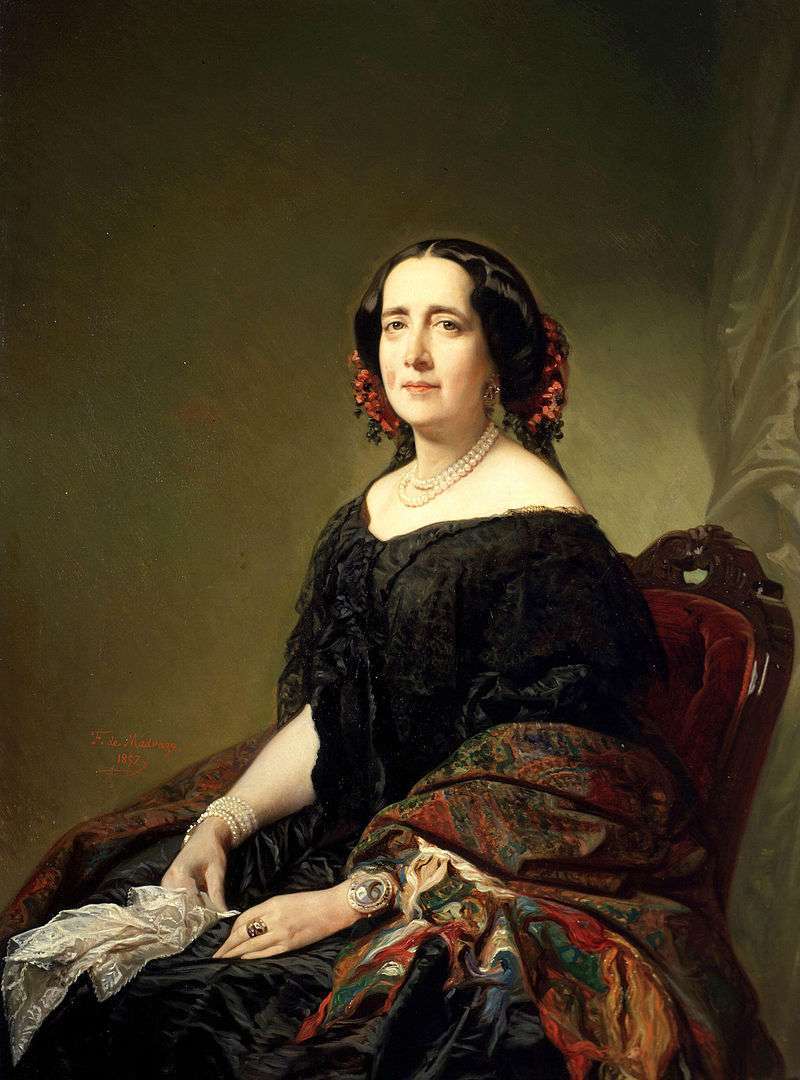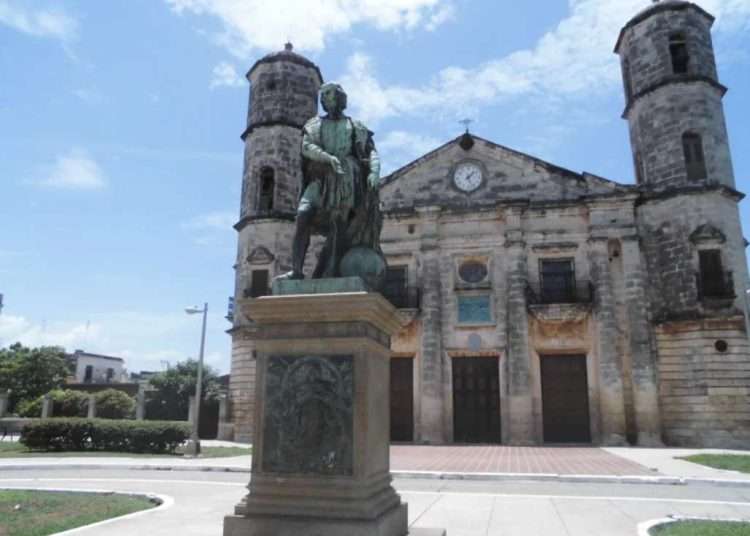Cárdenas, the City of Flags, in Matanzas, has among its firsts having the first statue of Admiral Christopher Columbus unveiled in Cuba and America in a public square.
The idea of this tribute was presented on October 9, 1858, in a request made by Mayor José Zabala to the Higher Government. Queen Elizabeth II gave the go-ahead to the project in early 1860; this was informed through an official letter dated March 30.
It was the second attempt to create a similar monument in Cuba since in 1827 the Havana City Council wanted to erect one in the Alameda de Extramuros, but it only got to a project stage.
Domingo Verdugo Massieu, husband of the Camagüey poetess Gertrudis Gómez de Avellaneda, had been Lieutenant Governor of the township of Cárdenas since 1860. When he was notified of the news, he immediately adopted the measures to build the work, financed mostly by popular subscription.
“The arrangements began at Plaza Recreo de Isabel II (formerly called Plaza de Fernando VII and later of Quintayros) where the monument was to be located. The task of decoration with the railings, benches, and floor of the Plaza de Recreo was assigned to the builder and master builder Don Pedro Roselló. He was also responsible for working with the pedestal and the placement of the statue.
“In Madrid, the gentlemen of the Academy of History, Mr. Marqués de Morante and Mr. Raimundo Miguel Cabesa were commissioned to arrange the artistic part of the monument. Mr. Antonio Olañeta was appointed to attend to everything related to the material part and its execution. The statue had a total cost of 8,000 pesos, covered by the public subscription and also with government funds,” according to information collected by Pedro Luis Hernández Álvarez in the multimedia “Cárdenas, Ciudad de Primicias.”

Execution of the work
The famous plastic artist José Piquer y Duart (1806-1871), resident in Madrid, “First Chamber Sculptor” of the Spanish crown and meritorious academician, would make the eight-foot effigy modeled in plaster and cast in bronze in Marseille, France, by M. Morell.
The transportation house of Raibaud e Hijos, in July 1862 began its transfer to Cuba on the Canarias steamer and on September 13 the coastal schooner Rayo, property of Lucas Muro, took the sculpture from Havana to the port of Cardenas.
The historian Alejandro Portell Vilá tells us about its characteristics:
“On the front of the pedestal, which the statue overwhelms, since the other stone piece of the base that is missing for proportionality was lost on the trip from Europe, there is a bronze bas-relief that signifies the triumph of Faith in the female Eucharistic figure close-up on Hell conquered by the great enterprise of Columbus. The Grand Admiral’s ships can be seen with their sails furled off the American land that features exotic plants and animals. A thirteen-rayed sun stands immediately behind the female figure.”
And Ecured provides us with more information: “The cast iron railing, in a tasteful imitation of halberds, which was to surround the statue, was made in New York and shipped on the brig Petsy Armes that could not reach Cárdenas as it was captured by the Confederates of the South of the United States, losing its cargo with it. Ordered to build again, its cost amounted to $821.97. The granite pedestal was built in Boston at a cost of $2,000.00.”

Inauguration
Governor Domingo Verdugo, of Canarian origin, who had been a parliamentary deputy, a cavalry colonel and a former assistant to the King’s orders, put all his efforts so that the unveiling of the statue occurred in a solemn ceremony and that at the same time, it would be a motive for a popular festival. José María Morales, Municipal Mayor of Cárdenas, worked tirelessly during those days.
To raise funds that would help finance the maintenance of the new hospital built in the city, named Santa Isabel, a fair was held on December 25, 1862, and the following day the monument was unveiled. A witness to the events, the physician, poet, and publicist Ramón Zambrana, recalled what happened:
“Everyone knows the published program, with due anticipation, of the great parties that Cárdenas was going to celebrate, and everyone knows that thousands of invitation ballots were distributed throughout the island and outside of it: well, when the first day dawned of those indicated, on December 25, the turnout was extraordinary: there was not a house in Cárdenas that did not have some or many guests in accommodation, apart from those who filled the hotels.”
The Captain General of the island appointed Joaquín Gutiérrez de Rubalcaba, Commander General of the Navy, to represent him at the event, which was also attended by the Oidor D. Francisco Campos, vice rector of the University of Havana, among other administrative personalities and the field of culture.
“Since the early hours of the 26th, it was already understood that it was the one designated for the celebration of the grandiose ceremony, that the magnificent statue of Columbus was to be uncovered in full view of the people: it did not seem that after two in the morning those who made up the extraordinary gathering of the Bazaar would have withdrawn to their homes: the streets were full of people who moved in all directions, heading particularly to the beautiful Plaza de Recreo, where still veiled, and surrounded by arches, flags and flowers, the statue stood, waiting for the end of the solemn mass that in the church, whose door was seen twenty steps away, was already being celebrated at eight o’clock, being His Excellency the Honorable Mr. Diocesan Bishop who officiated in it as Pontifical: in the temple were all the notable people who from Havana and other towns on the island had come to highlight the great event.”
After the parish priest D. Salvador Negro gave a speech in the Church about the life and work of Christopher Columbus, everyone went to the Plaza, where the sculpture was uncovered; the Governor pronounced the closing words of the great event. The poets did not miss the event: Francisco Muñoz de Rubalcava and Ramón Zambrana read their verses inspired by the Admiral and a choir sang the hymn created for the occasion by Gertrudis Gómez de Avellaneda:
Scatter flowers,
Cuban nymphs,
and may the martial song
reach the heavens,
that already the effigy
of the Admiral
has stepped triumphantly
on his Pedestal….
Then about a thousand men belonging to the Naples regiment, and corps of engineers, navy, and cavalry volunteers filed before the crowd.
At night the celebration continued with a banquet and dances in the Filarmónica and Casino halls. General Joaquín Gutiérrez de Rubalcaba, during one of the many toasts of the revelry, raised his glass to express these words that sealed the homage to Columbus:
“Representing in this solemnity the worthy Mr. Captain General of the Island of Cuba, at his request, I, a sailor, attend with the deepest emotion the festivities with which, for the first time in Spanish dominions, the most illustrious of the sailors is being honored, raising in this township a monument worthy of his renown. Glory to the Admiral! Honor to the Cárdenas authorities! Honor to its inhabitants all!” [sic]
________________________________________
Sources:
Alejandro Portell Vilá: “Estatua de Colón,” press clipping provided by the researcher Ernesto Álvarez Blanco.
Rodrigo Gutiérrez Viñuales: “Un siglo de escultura en Iberoamérica (1840-1940),” in Pintura, escultura y fotografía en Iberoamérica, siglos XIX y XX. Madrid, Cátedra publishers, 1997, pp. 89-151. ISBN: 84-376-1579-8.
Pedro Luis Hernández Álvarez in the multimedia “Cárdenas, Ciudad de Primicias,” Ecured.
Reyes Utrera Gómez: Homenaje a Cristóbal Colón en el V centenario de su muerte: Fotografías para el recuerdo de una figura histórica, en el Archivo General de Palacio,” Reales Sitios: Revista del Patrimonio Nacional, ISSN 0486-0993, No. 172, 2007.
- Zambrana: “Las grandes fiestas celebradas en Cárdenas con motivo de la inauguración de la estatua de Cristóbal Colón y del hospital de caridad,” La Cubana Printing House, Havana, 1863.










